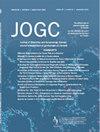Twin Birth and Hemolysis, Elevated Liver Enzymes, and Low Platelets (HELLP) Syndrome: A Population-Based Study
IF 2
Q2 OBSTETRICS & GYNECOLOGY
引用次数: 0
Abstract
Objectives
Although twin pregnancies are known to have higher rates of preeclampsia, the association between twin pregnancy and Hemolysis, Elevated Liver Enzymes, and Low Platelet Count (HELLP) syndrome has not been adequately studied. We assessed the association between twin pregnancy and HELLP syndrome, and also examined gestational age–specific rates of HELLP syndrome in twin and singleton pregnancies.
Methods
We conducted a retrospective cohort study of women with singleton or twin live births or stillbirths between 200 and 436 weeks gestation in British Columbia, Canada, from 2008/09 to 2019/20. Data on the demographic and clinical characteristics were obtained from the British Columbia Perinatal Database Registry. Logistic regression was used to estimate adjusted odds ratios and 95% CIs, adjusted for maternal age, body mass index, smoking, and other potential confounders.
Results
Among 524 236 women (515 953 singleton and 8283 twin pregnancies), 1510 were diagnosed with HELLP syndrome (2.9 per 1000 women). HELLP syndrome occurred in 181 twin pregnancies (21.9 per 1000 women), while 1329 cases occurred in singleton pregnancies (2.6 per 1000 women) (rate ratio 8.5 [95% CI 7.3–9.9]). The adjusted odds ratio for the associations between HELLP syndrome and twin versus singleton pregnancies was 7.1 (CI 6.0–8.5). In twin pregnancies, the incidence of HELLP syndrome increased markedly from 260 to 286 weeks gestation until 370 to 396 weeks. In contrast, the incidence of HELLP syndrome increased more gradually from 230 to 406 weeks gestation in singleton pregnancies.
Conclusions
Twin pregnancy is strongly associated with HELLP syndrome. HELLP syndrome risk in twin pregnancies increases markedly from 260 weeks gestation onwards.
双胞胎出生和溶血、肝酶升高和低血小板(help)综合征:一项基于人群的研究。
背景:虽然已知双胎妊娠有较高的先兆子痫发生率,但双胎妊娠与溶血、肝酶升高和低血小板(HELLP)综合征之间的关系尚未得到充分研究。我们评估了双胎妊娠与HELLP综合征之间的关系,并检查了双胎和单胎妊娠中HELLP综合征的妊娠年龄特异性发生率。方法:回顾性队列研究,纳入2008/09-2019/20年加拿大不列颠哥伦比亚省20 ~ 430妊娠期单胎或双胎活产或死产妇女。人口统计学和临床特征的数据来自BC省围产期数据库登记处。采用Logistic回归估计校正优势比(AORs)和95%置信区间(CI),校正了产妇年龄、体重指数、吸烟和其他潜在混杂因素。结果:在524236名妇女(515953名单胎妊娠和8283名双胎妊娠)中,有1510名妇女被诊断为HELLP综合征(每1000名妇女中有2.9名)。181例双胎妊娠发生HELLP综合征(每1000名妇女21.9例),1329例单胎妊娠发生HELLP综合征(每1000名妇女2.6例);发病率比为8.5 (95% CI 7.3-9.9)。双胎与单胎妊娠相比,HELLP综合征的aOR为7.1 (CI 6.0-8.5)。在双胎妊娠中,HELLP综合征的发生率在妊娠26 ~ 280周至37 ~ 39周显著增加。相比之下,单胎妊娠中HELLP综合征的发生率从23 ~ 400妊娠逐渐增加。结论:双胎妊娠与HELLP综合征密切相关。双胎妊娠中HELLP综合征的风险从260妊娠起显著增加。
本文章由计算机程序翻译,如有差异,请以英文原文为准。
求助全文
约1分钟内获得全文
求助全文
来源期刊

Journal of obstetrics and gynaecology Canada
OBSTETRICS & GYNECOLOGY-
CiteScore
3.30
自引率
5.60%
发文量
302
审稿时长
32 days
期刊介绍:
Journal of Obstetrics and Gynaecology Canada (JOGC) is Canada"s peer-reviewed journal of obstetrics, gynaecology, and women"s health. Each monthly issue contains original research articles, reviews, case reports, commentaries, and editorials on all aspects of reproductive health. JOGC is the original publication source of evidence-based clinical guidelines, committee opinions, and policy statements that derive from standing or ad hoc committees of the Society of Obstetricians and Gynaecologists of Canada. JOGC is included in the National Library of Medicine"s MEDLINE database, and abstracts from JOGC are accessible on PubMed.
 求助内容:
求助内容: 应助结果提醒方式:
应助结果提醒方式:


